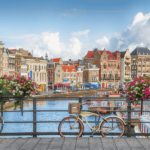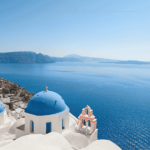Travelers, brace yourselves. The era of free-roaming tourism is rapidly changing, with more destinations considering entry fees to manage overwhelming visitor numbers. As cities struggle with the double-edged sword of popularity, some are preparing to turn tourism into a more exclusive experience. What started as a whisper is becoming a global conversation. Cities around the world are realizing that uncontrolled tourism comes at a significant cost to local communities, infrastructure, and cultural preservation. The solution? Make tourists quite literally pay for the privilege of visiting.

Popular destinations are experiencing a critical mass of visitors that threatens to destroy their fundamental appeal. Imagine a picturesque village suddenly overwhelmed by thousands of tourists, completely transforming its character and straining local resources.
The Potential Candidates
Five destinations stand out as potential pioneers in the tourist entry fee movement, each with its unique challenges and motivations.
Dubrovnik: A Walled City Under Siege
Croatia’s historic Dubrovnik presents a dramatic case of tourism overload. With a modest population of just over 41,000 residents, the city was inundated by 1.5 million tourists in 2019 alone. The ancient walled city, with only three primary entry points, is perfectly positioned for potential entry fee implementation.
Local authorities have already taken significant steps to manage overtourism. In 2018, the mayor implemented strict cruise ship limitations, reducing the number of ships allowed to dock. Additionally, the city dramatically cut souvenir stands by 80 percent, signaling a serious commitment to preserving its authentic character.
Despite current resistance from tourism officials who prefer destination management strategies, the pressure continues to mount. The city’s infrastructure and local quality of life are under increasing strain, making an entry fee a potential future solution.
The Isle of Skye: Paradise Under Pressure
Scotland’s rugged Isle of Skye has experienced a tourism explosion that threatens its natural beauty and local way of life. The dramatic landscape has become increasingly popular, leading to significant infrastructure challenges that demand innovative solutions.
The island has already invested heavily in managing visitor impact, focusing on parking facilities, road restoration, and congestion management at popular sites like the famous Fairy Pools. Interestingly, Skye has a historical precedent for visitor fees—just 20 years ago, travelers paid £11.40 to cross the bridge connecting the island to the mainland.
While current tourism management focuses on technological solutions to reduce congestion, an entry fee remains a potential future strategy. The island’s limited infrastructure and growing popularity make it a strong candidate for more restrictive tourist control measures.
Hallstatt: A Village Overwhelmed
The picturesque lakeside village of Hallstatt in Austria represents the extreme end of overtourism. With a permanent population of merely 700 residents, the village can be overwhelmed by up to 10,000 visitors on peak days—a ratio that threatens to completely transform its character.
Local residents have actively protested against overcrowding, pushing local authorities to consider drastic measures. The village’s mayor has candidly admitted that traditional management strategies have been exhausted, signaling openness to more radical approaches like entry fees.
Austria’s tourism minister has spoken in favor of visitor caps, making Hallstatt a prime candidate for implementing entry fees. The village’s worldwide fame, partly due to its alleged inspiration for Disney’s Frozen, has turned it into a global tourism hotspot desperately seeking balance.
Capri: Italy’s Island of Exclusivity
The glamorous Italian island of Capri stands at a critical tourism crossroads. Known for its luxurious reputation and limited geographic space, the island is struggling to balance global appeal with local preservation. Following Venice’s groundbreaking entry fee, Capri’s mayor has openly discussed potential visitor regulations.
Capri’s unique challenges include extremely limited infrastructure and a delicate environmental ecosystem. During peak seasons, the island’s population is dramatically outnumbered by tourists, creating significant pressure on local resources. The mayor has explicitly stated the need to “regulate the flow of tourism,” suggesting an entry fee could be imminent.
The Italian tourism board is closely monitoring Venice’s experimental fee, with Capri emerging as a prime candidate for similar measures. The island’s global appeal and fragile infrastructure make it an ideal location for implementing strict tourist management strategies.
Amsterdam’s Innovative Approach
The Netherlands has already taken aggressive steps to manage tourism, with Amsterdam leading the charge. The city has implemented various strategies including discouraging certain types of tourists, banning cruise ships, and stopping active promotional efforts in certain areas.
Currently, Amsterdam charges a tourist tax of seven percent on accommodation rates, plus an additional €3 per person per night. An entry fee for day-trippers seems a natural progression of their current approach. The city aims to disperse visitors to less-crowded regions like Zeeland and Groningen, suggesting a sophisticated approach to tourism management.
The Global Context
This isn’t just about making money. It’s about sustainable tourism, protecting local communities, and ensuring that popular destinations don’t become victims of their own success. Cities are seeking a delicate balance between welcoming visitors and preserving their unique character.
The next generation of tourism is about quality over quantity, respect over consumption, and understanding over mere observation. Entry fees might just be the beginning of a more responsible travel era.




